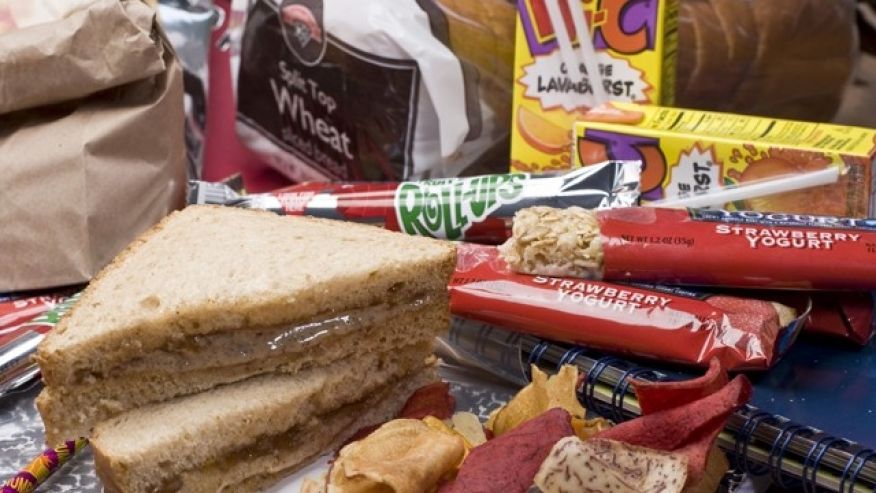Don’t Judge ‘Healthy’ Food By Its Cover Say Nutritionists

SAN FRANCISCO – You want your back-to-schooler to eat a healthy diet, so you pack a “wheat” bread sandwich and tuck a “juice” drink in her brown-bag lunch. But did you know that loaf simply labeled “wheat” may be just white bread with added coloring? And the “juice” drink may contain more water than juice?
It pays to read between the label lines, nutritionists say.
“People in the store, trying to make healthy choices, do fall into that pitfall,” said Andrea Giancoli, registered dietitian and spokeswoman for the American Dietetic Association. “They see ‘wheat’ or they see ‘multigrain’ or ‘sprouted’ and things of that nature. Unless it said ‘whole grain’ or ‘whole wheat’, it probably isn’t.”
Which means it may not be nearly as nutritious as consumers think.
Of course, there is an easy way to know whether the wheat you eat is whole and whether the juice is juicy. Turn the package around. The ingredients list, often found on the back of food packaging, lists each item by order of weight, greatest to least.
“The front of the package is almost all marketing,” said Giancoli. “You really have to be a smart consumer and turn it over, look at the ingredients.”
When buying bread, for example, it helps to know that “enriched wheat flour” means the wheat grain has been processed to create a fluffier, softer product, thereby removing nutrients. In other words, it’s white flour.
Manufacturers are required to restore some, but not all, of the nutrients to processed wheat — hence the term “enriched.” But smart shoppers look for “100 percent whole wheat”, which means the product meets Food and Drug Administration standards for whole grain flour.
There are similar — but still sometimes confusing — labeling requirements for juice. The FDA rules say if the package is labeled “juice,” the product must be 100 percent juice. But juice blends can still use the word, such as “juice drink” or “juice cocktail.”
Fruit leathers also merit scrutiny. Some are 100 percent fruit and, while not as nutritional as a piece of fruit, are fine as a treat in small portions, Giancoli said. Others have added sugars — the ingredient list tells the story.
Parents aren’t the only ones scanning labels. Earlier this year, the FDA sent letters to 17 food manufacturers warning them of problems with labels. Issues ranged from unauthorized health claims to products that were advertised as “zero trans fat” without noting that the product was high in saturated fat.
Still, going after manufacturers one by one is “a little like playing Whac-A-Mole, with one hand tied behind your back,” Michael Taylor, FDA deputy commissioner for foods, wrote in a recent post on The Atlantic’s online site.
Taylor, who is responsible for food safety and nutrition labeling, said the FDA has launched a major campaign to improve the nutrition labels on the backs of packages while working on ways to have essential information and guidance on the front.
The Washington, D.C.-based Center for Science in the Public Interest is calling for more enforcement of labeling laws as well as revamped nutrition labels that alert buyers to products high in fat and sugar, said Bruce Silverglade, director of legal affairs for CSPI.
For consumers, the situation right now is “buyer beware,” he said.
CSPI also is suggesting that if a product makes a particular health claim, such as “made with whole wheat,” it should be required to list how much of that ingredient is in the product, by percent, on the front of the package.
Industry representatives say most food companies work hard to ensure their labels are truthful and not misleading.
Ingredients and nutrition information are listed and manufacturers have to follow FDA guidelines, said Regina Hildwine, senior director of science policy labeling and standards for the Grocery Manufacturers Association, based in Washington.
“We really do have to make sure that we’re following these requirements, making responsible representations, making legal statements that are truthful and not misleading and well-substantiated by scientific evidence,” she said. “That’s a job that requires continual attention.”
[“source-ndtv”]




